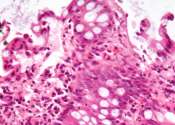Technique is almost 86 percent effective in preventing maternal death from hemorrhaging
According to the World Health Organization's latest statistics, from 2017, more than 800 women around the world die every day from preventable causes related to pregnancy and childbirth—the vast majority of them in resource-poor ...
Jan 6, 2020
0
26








